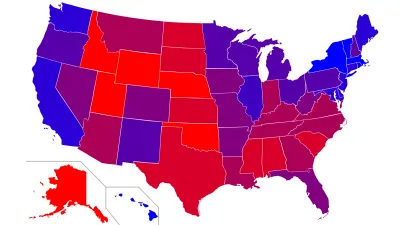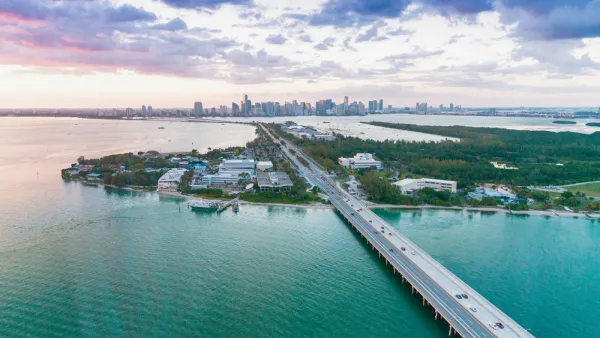In this op-ed, Arthur B. Laffer and Stephen Moore analyze the recent Census findings showing renewed migration from the Northeast and Midwest to the South and Southwest. They note the movement is clearly from blue states to red, and explain why.

The earlier Census Bureau findings reported here showed the movement to predominantly politically red (Republican) states from blue (Democratic) states. Laffer, a member of President Reagan’s Economic Policy Advisory Board for both of his two terms (1981-1989) and chairman of Laffer Associates, and Moore of the Wall Street Journal's editorial board, attribute the economic attraction of the red states to three reasons:
- Low or zero income taxes: "We predict that within a decade five or six states in Dixie could entirely eliminate their income taxes. This would mean that the region stretching from Florida through Texas and Louisiana could become a vast state income-tax free zone", they write.
- Business-friendly, as in the restrictiveness of regulations that could stifle business growth. The fracking moratorium in New York is held up as a model for "business-unfriendly" and point to neighboring Pennsylvania where the natural gas industry is flourishing. In energy-intensive Texas, four of the top ten metro areas (in growth) were located.
- Having "right-to-work" laws that make it more difficult to unionize workers. In addition, they blame high minimum wage laws that "price low-income workers out of the job market."
Laffer and Moore see domestic migration as vindication that the low tax and business friendly policies of red states are succeeding while high tax and business unfriendly policies in the blue states are failing.
Readers responded - offering additional reasons for the domestic migration.
See the 15 fastest growing large metros in this Washington Post article.
Correspondent's note: Access to Wall Street Journal articles for non-subscribers may be limited after April 11.
FULL STORY: Opinion: Laffer and Moore: The Red-State Path to Prosperity

National Parks Layoffs Will Cause Communities to Lose Billions
Thousands of essential park workers were laid off this week, just before the busy spring break season.

Retro-silient?: America’s First “Eco-burb,” The Woodlands Turns 50
A master-planned community north of Houston offers lessons on green infrastructure and resilient design, but falls short of its founder’s lofty affordability and walkability goals.

Delivering for America Plan Will Downgrade Mail Service in at Least 49.5 Percent of Zip Codes
Republican and Democrat lawmakers criticize the plan for its disproportionate negative impact on rural communities.

Test News Post 1
This is a summary

Test News Headline 46
Test for the image on the front page.

Balancing Bombs and Butterflies: How the National Guard Protects a Rare Species
The National Guard at Fort Indiantown Gap uses GIS technology and land management strategies to balance military training with conservation efforts, ensuring the survival of the rare eastern regal fritillary butterfly.
Urban Design for Planners 1: Software Tools
This six-course series explores essential urban design concepts using open source software and equips planners with the tools they need to participate fully in the urban design process.
Planning for Universal Design
Learn the tools for implementing Universal Design in planning regulations.
EMC Planning Group, Inc.
Planetizen
Planetizen
Mpact (formerly Rail~Volution)
Great Falls Development Authority, Inc.
HUDs Office of Policy Development and Research
NYU Wagner Graduate School of Public Service




























